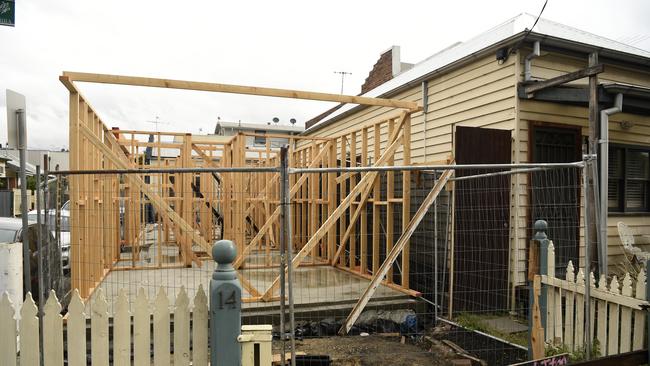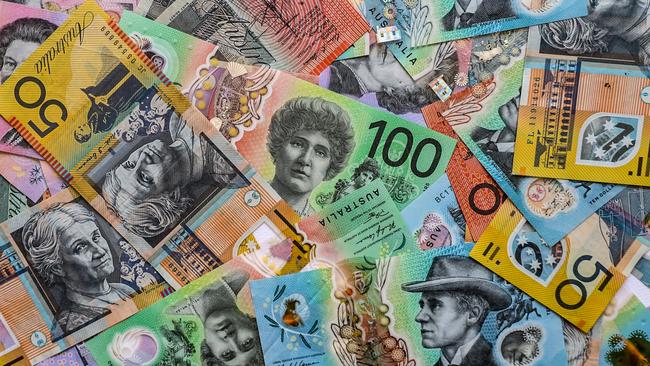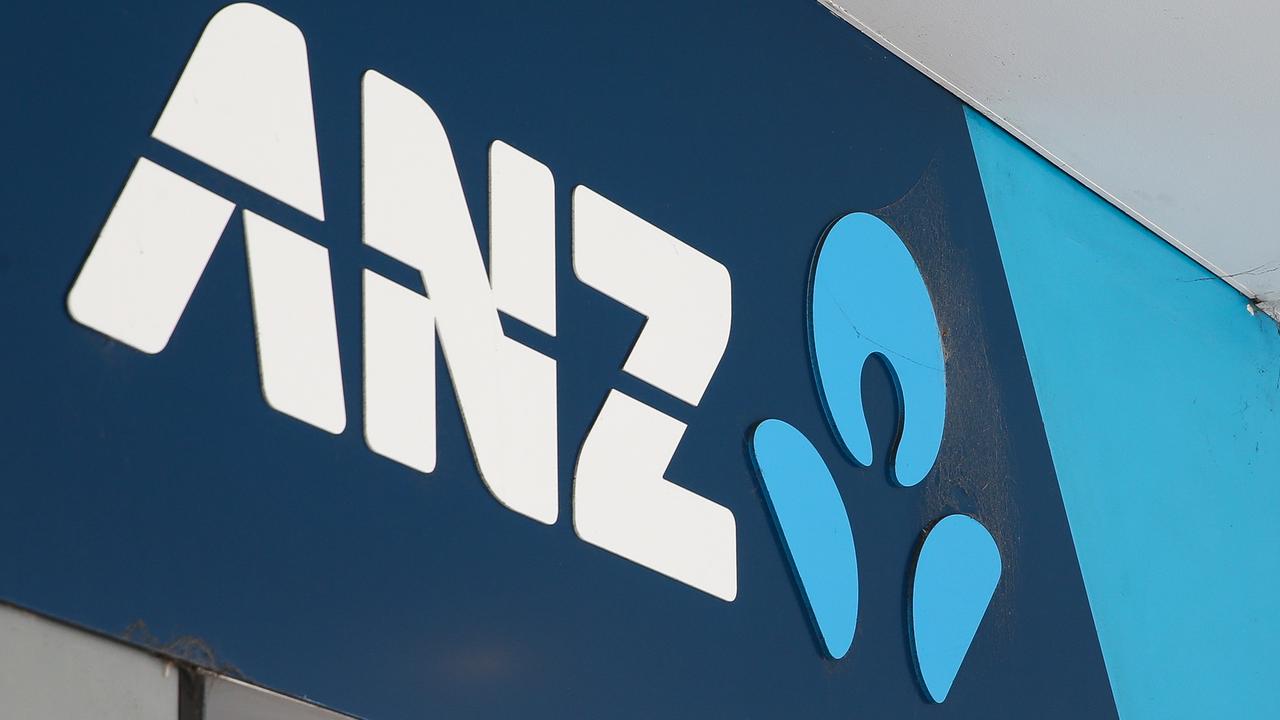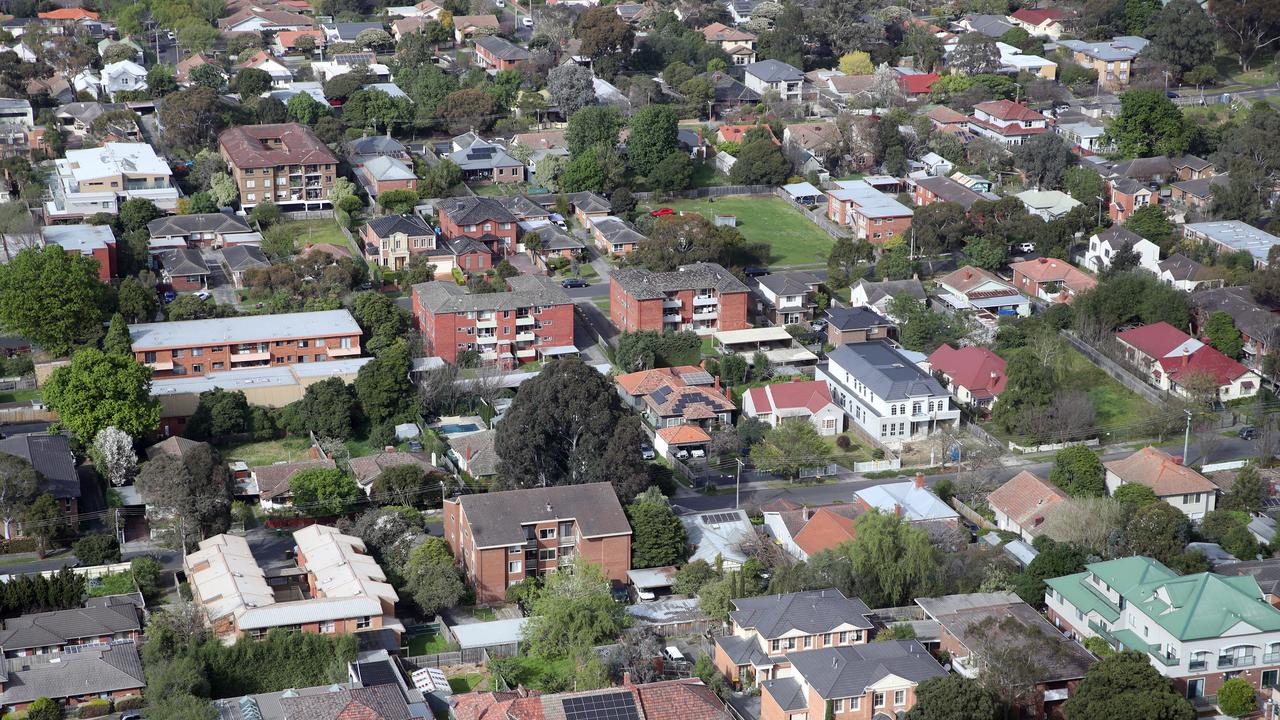Proof it’s never been tougher to buy a home in Australia
Surging house prices in every Australian capital city show it’s the worst time in history to be trying to buy a home.

Interest Rates
Don't miss out on the headlines from Interest Rates. Followed categories will be added to My News.
It’s never been tougher for Aussies to get into the housing market, as surging capital prices grow three times faster than the standard wage, new research shows.
According to Money.com.au, house prices have skyrocketed nationally by 3435 per cent since 1975 compared with just 1183 per cent growth in full-time wages.
Worst still for those trying to buy a house in Sydney, house prices have surged 4645 per cent, making it the least affordable city.
Money.com.au research and data expert Peter Drennan says now is the toughest it’s ever been to afford a home in Australia.
“We can put to rest any debate about which generation had it easier. The Silent Generation and baby boomers bought homes when prices were just 4-5 times the median wage, while today’s families are paying double to triple that – clearly, it’s not about skimping on avocado toast or making coffee at home,” he said.
If someone was to buy a home in Sydney today they would need 19 times the annual wage, up from five times in 1975.
In 1975, Sydney’s median house price was $34,300 – a stark contrast to $1,627,625 in 2024.
The data shows the average monthly mortgage repayment in Sydney 50 years ago was 44 per cent of the national median monthly wage. Now it’s 143 per cent – more than triple what it was.
This means the median income earner in Sydney cannot afford to buy a place.

“Even with two full-time incomes, buying an average house in Sydney today means facing house prices at 9.5 times the median wage. Back in 1990, when interest rates were sky high, the average monthly mortgage repayment in Sydney was 106 per cent of the median salary, Mr Drennan said.
Brisbane house prices are up 3801 per cent in 50 years, followed by Melbourne and Adelaide, which are up 3496 and 3351 per cent respectively.
“Once an affordable city, Melbourne experienced huge growth in the 1980s and 1990s, fuelled by a booming economy and an influx of new migrants,” Money.com.au property expert Mansour Soltani said.
“By the 2000s, however, affordability concerns had emerged. Recently, Melbourne has seen people packing up and moving regionally or interstate.”
Separate Australian Bureau of Statistics figures show just how far Aussies are stretching their budgets. According to the national figures, the average weekly ordinary time earnings for full-time adults was $1923.40 in May 2024, and although Sydney has the highest house prices, it does not have the wages to match.
Average weekly ordinary time earnings for full-time workers was highest in the ACT ($2132) and Western Australia ($2094) and lowest in Tasmania ($1711) and South Australia ($1777).
Much of the growth in wages in WA is through mining, an industry with the highest-paid workers on average at $3015 a week for full-time employees.
While Perth’s house prices have risen sharply, it has not reflected the growth of other capital cities.
In 1975, the median house price in Perth was $24,500. It has risen to $777,921 in 2024.
The median house price is now nine times the median annual wage compared with four times 50 years ago.

The average monthly mortgage repayment in Perth five decades ago was 32 per cent of the monthly median wage and today it’s 68 per cent.
Mr Soltani said Perth had a rollercoaster ride of market highs and lows over the decades.
“In the 1980s, Perth saw steady growth due to economic reforms and increased housing loans,” he said.
“The early 1990s brought a sharp downturn, with high interest rates and a global recession slowing the market.
“Perth’s housing market picked up in the late 1990s and then boomed in the early 2000s, driven by a strong resources sector.”
Despite affordability constraints, it is unlikely house prices will fall, as a wave of international immigration puts a floor on property prices.
According to AMP head of investment strategy and chief economist Shane Oliver, Australia needs to build about 250,000 new homes to keep up with demand but has only reached 176,000. This was in part due to home builders struggling with rising costs of material and labour as well as higher mortgage prices depressing new home sales.
House prices are now 5.62 per cent higher on average across all areas than this time last year.
REA Group senior economist Eleanor Creagh said it was clear housing demand was defying persistent affordability constraints.
“July’s tax cuts have boosted borrowing capacities and buyers’ budgets, which has supported growth. The persistent rise in home values has also motivated many to overcome affordability challenges and transact,” she said.
Originally published as Proof it’s never been tougher to buy a home in Australia


